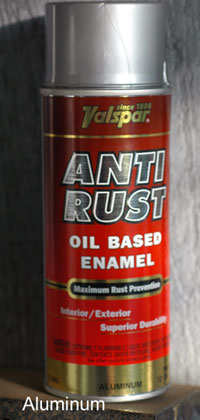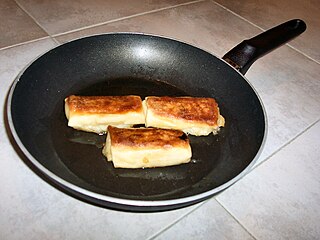History
Established in 1977, Eram's first business activity was to produce shoe soles from synthetic materials. Beginning in 1978, Eram started to specialize in the production of tennis courts made from resin and polyurethane pellets, thus creating Terre Battue Synthétique (Synthetic Clay) and the "TBS" brand.
In 1979, "TBS" developed applications for its anti-slip coatings in the world of sailing. Eric Tabarly collaborated in the development of the material which he went on to test on his boat Paul Ricard when taking part in the Lorient-Bermuda-Lorient transatlantic race. Since 1983, yachtsmen such as Philippe Jeantot, Florence Arthaud and Pierre Follenfant have been equipped with TBS anti-slip products, thus contributing to the promotion of the image of TBS anti-slip in the field of racing. In collaboration with Renault, "TBS anti-slip" equipped assembly areas and work stations. At the same time, the brand developed construction applications, in particular by supplying the nosing for the Paris metro steps and equipping the pedestrian zones in cities such as Lyon, Lille and Bordeaux.
In 1992, TBS developed a new range of products designed for risk prevention and accessibility in the construction and transport sectors.
During the summer of 2009, TBS worked on two sailing projects. They equipped the challenger 67 from the "Voile australe" group, and the expedition boat "Xplore Expeditions" with anti-slip equipment. TBS signed a partnership agreement for these two projects. The first fighting for equality of opportunities and the second for saving ecological heritage.
In June 2010, Eram changed its business name and became Passage SAS.

Paint is a liquid pigment that, after applied to a solid material and allowed to dry, adds a film-like layer, in most cases to create an image, known as a painting. Paint can be made in many colors and types. Most paints are either oil-based or water-based, and each has distinct characteristics.

Enamel paint is paint that air-dries to a hard, usually glossy, finish, used for coating surfaces that are outdoors or otherwise subject to hard wear or variations in temperature; it should not be confused with decorated objects in "painted enamel", where vitreous enamel is applied with brushes and fired in a kiln. The name is something of a misnomer, as in reality, most commercially available enamel paints are significantly softer than either vitreous enamel or stoved synthetic resins, and are totally different in composition; vitreous enamel is applied as a powder or paste and then fired at high temperature. There is no generally accepted definition or standard for use of the term "enamel paint", and not all enamel-type paints may use it.

Anti-fouling paint is a specialized category of coatings applied as the outer (outboard) layer to the hull of a ship or boat, to slow the growth of and facilitate detachment of subaquatic organisms that attach to the hull and can affect a vessel's performance and durability. It falls into a category of commercially available underwater hull paints, also known as bottom paints.

Anechoic tiles are rubber or synthetic polymer tiles containing thousands of tiny voids, applied to the outer hulls of military ships and submarines, as well as anechoic chambers. Their function is twofold:

Éric Marcel Guy Tabarly was a French Navy officer and yachtsman. He developed a passion for offshore racing very early on and won several ocean races such as the Ostar in 1964 and 1976, ending English domination in this specialty. Several of his wins broke long standing records. He owed his successes to his exceptional mastery of sailing and of each one of his boats, to both physical and mental stamina and, in some cases, to technological improvements built into his boats. Through his victories, Tabarly inspired an entire generation of ocean racers and contributed to the development of nautical activities in France.
Sperry or Sperry Top-Sider is an American brand of boat shoe designed in 1935 by Paul A. Sperry. Sperrys, or Top-Siders, were the first boat shoes introduced into the boating and footwear markets. Today the Sperry brand is owned by Wolverine World Wide and is headquartered in Waltham, Massachusetts.
Loctite is an American brand of adhesives, sealants, surface treatments, and other industrial chemicals that include acrylic, anaerobic, cyanoacrylate, epoxy, hot melt, silicone, urethane, and UV/light curing technologies. Loctite products are sold globally and are used in a variety of industrial and hobbyist applications.

A release agent is a chemical used to prevent other materials from bonding to surfaces. It can provide a solution in processes involving mold release, die-cast release, plastic release, adhesive release, and tire and web release.

Nautical tourism, also called water tourism, is tourism that combines sailing and boating with vacation and holiday activities. It can be travelling from port to port in a cruise ship, or joining boat-centered events such as regattas or landing a small boat for lunch or other day recreation at specially prepared day boat-landings. It is a form of tourism that is generally more popular in the summertime.

A non-stick surface is engineered to reduce the ability of other materials to stick to it. Non-stick cookware is a common application, where the non-stick coating allows food to brown without sticking to the pan. Non-stick is often used to refer to surfaces coated with polytetrafluoroethylene (PTFE), a well-known brand of which is Teflon. In the twenty-first century, other coatings have been marketed as non-stick, such as anodized aluminium, silica, enameled cast iron, and seasoned cookware.
B&G, formerly known as Brookes and Gatehouse, is a developer and manufacturer of advanced instrumentation, autopilot and navigation systems for racing and cruising sailing yachts.
SkyWave Mobile Communications is a global provider of satellite and satellite-cellular devices in the Machine-to-Machine (M2M) market. Skywave products help customers track, monitor and control industrial vehicles, vessels and industrial equipment. Applications include: tracking the location of vehicle fleets, monitoring data from oil and gas meters, and automated flow pumps.
VPLP design is a French-based naval architectural firm founded by Marc Van Peteghem and Vincent Lauriot-Prévost, responsible for designing some of the world's most innovative racing boats. Their designs presently hold many of the World Speed Sailing records.

Beverage can printing refers to the art and practice of applying an image to a metal beverage can, to advertise its contents.

Iraqi Light Armored Vehicle or International Light Armored Vehicle is an armored fighting vehicle based on the Cougar and manufactured by Force Protection Industries, BAE Systems and General Dynamics.
German submarine U-480 was an experimental Kriegsmarine Type VIIC U-boat of World War II.
The European Coil Coating Association (ECCA) is an international non-profit association dedicated to the diffusion of the use of coil and/or sheet coated metal.
According to EN 13523-0, a prepainted metal is a ‘metal on which a coating material has been applied by coil coating’. When applied onto the metallic substrate, the coating material forms a film possessing protective, decorative and/or other specific properties.
Yvan Griboval was born on 7 January 1957 in Mont-Saint-Aignan from Cécile Griboval born Toutain (1924-2012) and from Roger Griboval (1908-1997). Roger Griboval was an impressionist painter from the Ecole de Rouen, renowned for his talent as an aquarellist. Only child, Yvan Griboval discovered the nature accompanying his father painting en plein-air: Higher-Normandy coast and at the edge of the Seine around Rouen. He spent all his weekends and holidays in Saint-Valéry-en-Caux, where he was taught very young to fish on the sea, and above all to discover the marine environment and to the sailing competition on Requin.

The Wētā 4.4 Trimaran is a 4.4 metre sailing dinghy conceived and developed in New Zealand from 2001-2006 by Roger and Chris Kitchen and others with original drawings by TC Design's Tim Clissold.










